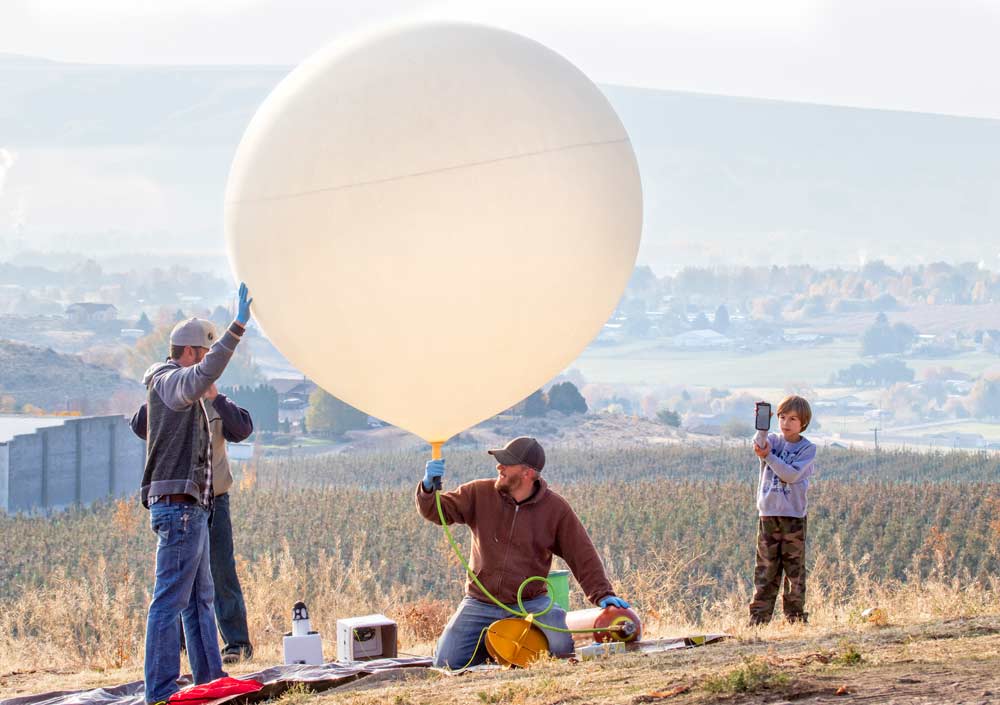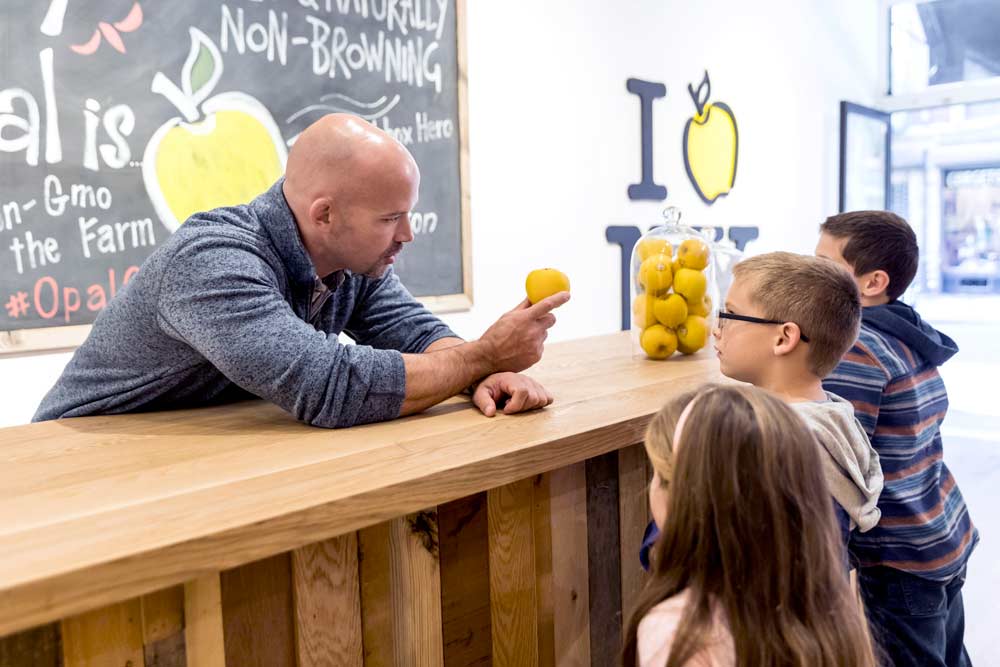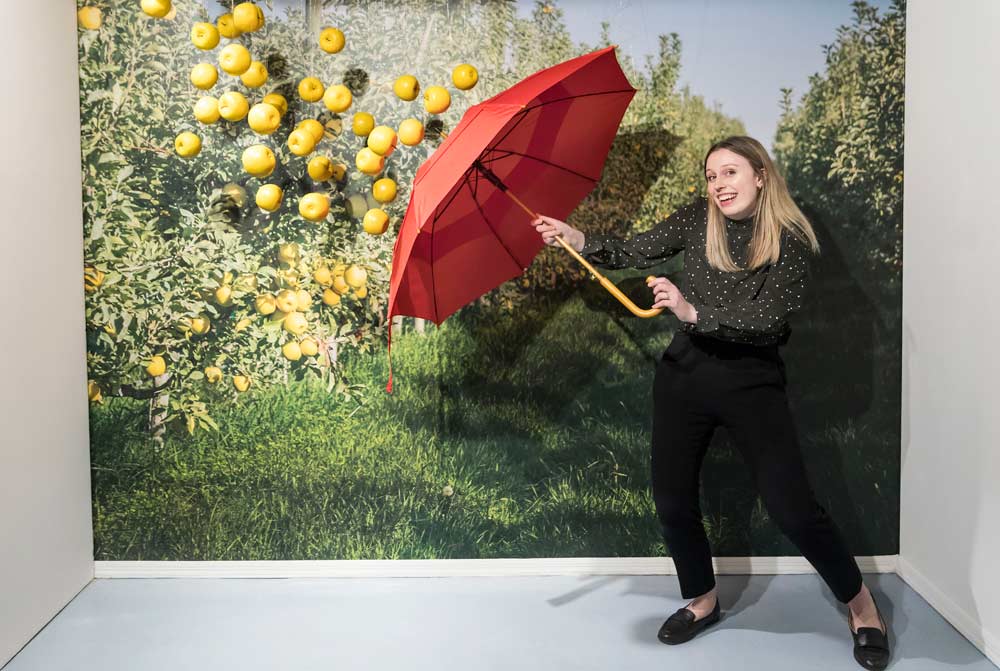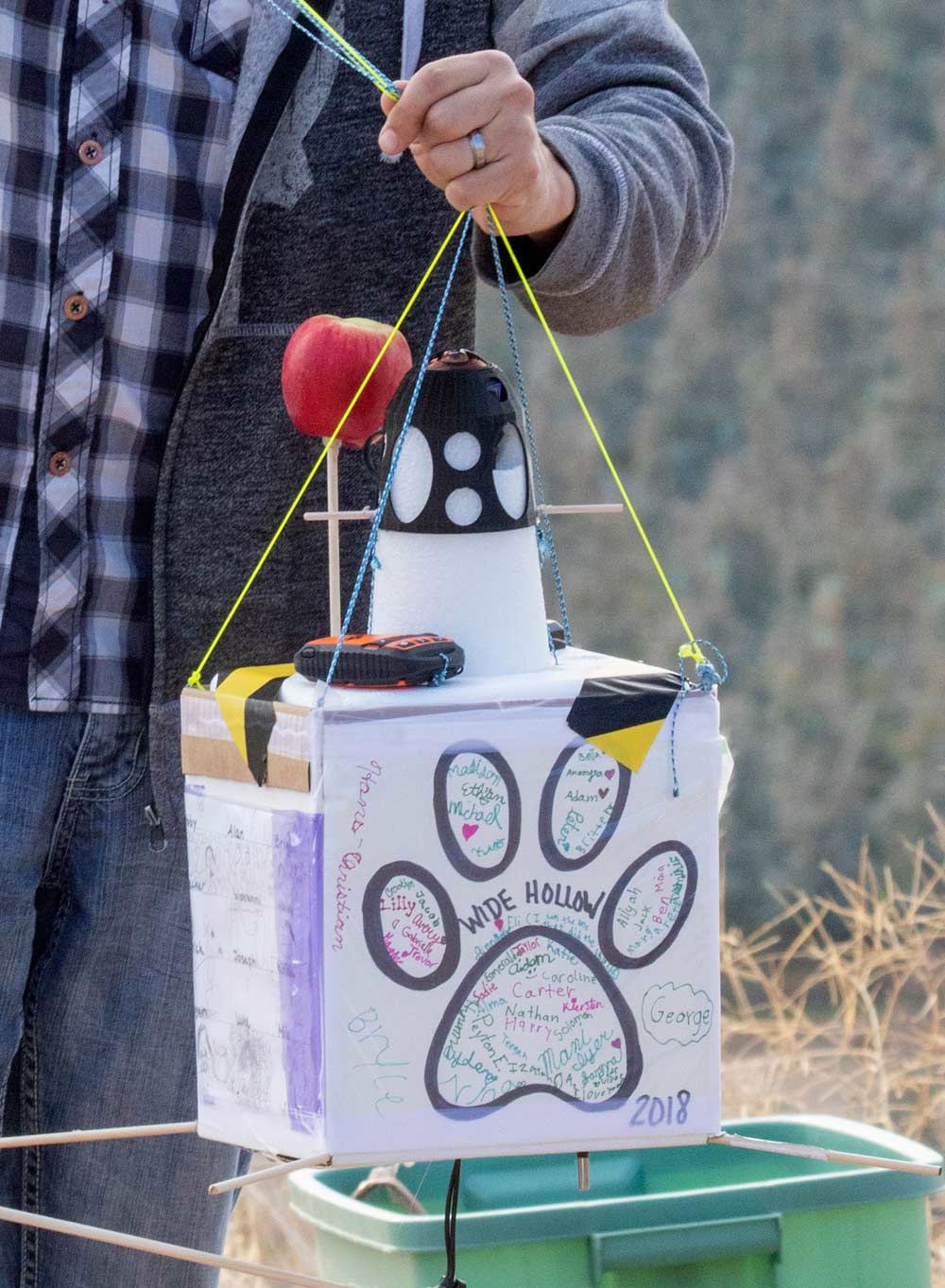
Autumn Glory, a club variety owned by Domex Superfresh Growers, really took off last fall.
Literally.
A freshly picked apple was launched into the stratosphere by a homemade weather balloon system. Mounted atop a payload of tracking equipment, the Autumn Glory posed in front of a video camera to capture the effect of upper-atmosphere adventure on it.
Masterminded by two employees in the technology department, who designed and built the launch system as a hobby, the event was a science experiment designed to promote teamwork at the office and engagement with local students, said Mike Preacher, director of marketing for Domex Superfresh Growers. The 2018 launch was the second launch, after the first in 2017 was such a hit.
“We conceived it largely for fun last year and what we found was that it really resonated with our customers,” Preacher said. The company shared photos and videos of its launch on social media. “It was a really good way to open conversations with customers about the apple,” he said.
Social media offers a new way to reach customers and, as such, it’s increasingly embraced by marketers looking to build enthusiasm for a new apple variety.
“As far as brand building is concerned, it’s quick, it’s efficient, and it’s controlled,” said Rena Montedoro, vice president of marketing for Crunch Time Apple Growers, who manages SnapDragon and RubyFrost. “I’m able to talk to our consumers in real time and engage with them.”
Social media is the core of her brand development efforts now, she said, although Crunch Time continues to do traditional marketing campaigns as well.
“When I look at my SnapDragon Facebook page, I’m not just looking at the likes. Likes are stagnant. I study the conversations, the content,” Montedoro said. “We had a consumer yesterday who took pictures of stores who didn’t have (SnapDragons) and sent them to us. We’re creating fans and there is nothing better than fans.”

To reach more of their target demographic — millennials and boomers interested in their health — Crunch Time partnered with the Tough Mudder race series, offering apples at the finish line and reaching their millions of social media followers.
“We get our apples to 25,000 people in real time at the finish line and it allows me to share with their audience,” Montedoro said. “We’re all about healthy eating, so it was a really great fit for us.”
FirstFruits Marketing also uses social media to reach their target demographic for the Opal, said marketing coordinator Joe Vargas.
“We have a demographic built for this apple: It’s new moms in their 30s that are trying to find things that their kids like,” Vargas said. Opal doesn’t brown after it’s been cut, but was bred conventionally, so it’s a natural fit for kid-friendly slicing.

To introduce the Opal to people, FirstFruits staged a “pop-up orchard” in a New York City storefront for three days in October 2018. The event drew several thousand people who posed in the orchard’s whimsical photo opportunities, such as hiding under an umbrella as Opals rained from the ceiling or sitting on a rope swing in the “orchard.”
“The big thing we wanted to create with the event was social opportunities. We were trying to bring the orchard to people,” Vargas said. Visitors also got to try the apples and talk with postharvest manager Paul Esvelt about the non-GMO breeding that created the Opal.
The event generated buzz on social media and led to a spot on the Fox & Friends morning talk show, where Esvelt got to introduce the apple to the show’s nationwide audience.

That’s definitely a success, but in general, measuring the impact of this type of social-focused marketing is tricky, Vargas said. FirstFruits is still learning how best to fit social strategies into their traditional marketing, but it’s increasingly important, he said. FirstFruits CEO Chuck Zeutenhorst agreed.
“The cost of developing a new apple is staggering,” he said, and the competition for consumers’ attention is steep with the proliferation of new varieties. Building a brand is “a huge undertaking and social media is a large part of that now. It’s a more efficient way than demo-ing,” Zeutenhorst said.
Plus, social marketing creates new opportunities to help consumers see apples as cool, Vargas said.
That’s what the Autumn Glory team was aiming for. “It’s more fun than other ways to sell apples,” Preacher said. “I think we’ll do it every year it’s so fun.”

In October, their apple flew for 28 miles, reaching a maximum height of 20 miles above the earth before landing, totally by happenstance, at a wind farm where a team of inspectors at work noticed the Autumn Glory descending via parachute, he said. Superfresh team members tracking the flight quickly followed.
“It still had some frost on it when it landed. We all had a bite and it was still cold,” Preacher said. •
—by Kate Prengaman






Leave A Comment